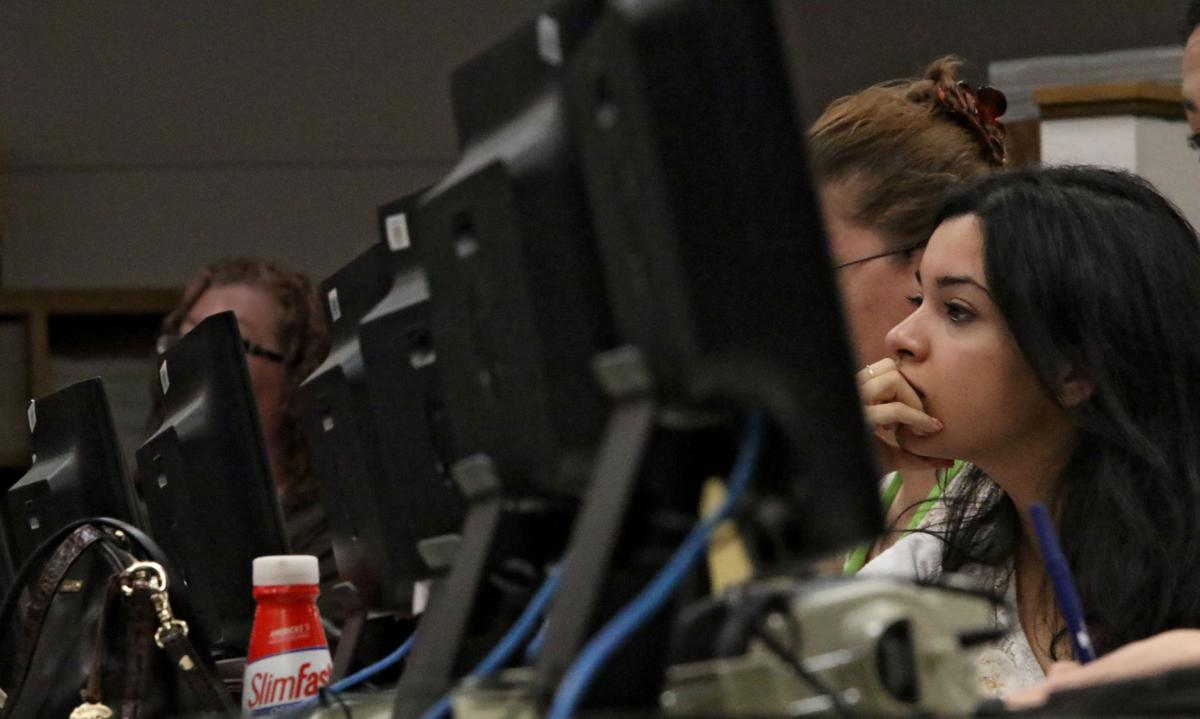Arizona has been named the least attractive state in the country for educators, according to a national study on the teacher shortage crisis.
With one of the highest turnover rates of any state, and 24 percent of the teacher workforce eligible to retire by the end of 2018, the outlook for Arizona’s future points to continued shortages, research released Wednesday by the Learning Policy Institute found.
As the end of the first quarter of the school year approaches, Tucson-area school districts report having nearly 170 vacant teaching positions.
Those findings, combined with the fact that fewer people are going into the teaching profession, is “terrifying” the leader of Tucson’s largest school district said.
“That’s a real wake up call,” said TUSD Superintendent H.T. Sanchez, who feels that many of Arizona’s problems stem from an overly-involved legislature. “If that’s not shocking people right now and encouraging people to get out of teachers’ way and let them do a good job, then I don’t know what’s going to wake folks up.”
Sanchez came to Tucson three years ago from Texas where per pupil funding was higher, as were teacher salaries. Legislative involvement in daily classroom instruction was also not as confining as it is here, he said.
“It seems we have people at the legislative level that want to do the teachers job instead of the legislature doing its job, which is setting policy that creates economic strength and vitality, and making decisions based on research instead of doing the kind of things that are done now.”
Sanchez pointed specifically to efforts in Arizona to cut funding for career and technical education programs and eliminating funding for full-day kindergarten despite studies showing the benefits not only for children, but the community as a whole.
Another example: the state’s involvement in determining whether third-graders are promoted to the next level, Sanchez said.
“That’s the teacher’s job — the teacher knows which kids should move on to fourth grade and which shouldn’t. It shouldn’t be driven by the legislature. There has to be a focus on policy making at the legislative level as opposed to micromanaging.”
In developing the state attractiveness rating, the Learning Policy institute looked at compensation, teacher turnover, teacher qualifications and working conditions, which took into account the percentage of teachers who feel they have control over their classrooms and those who were worried about job security because of testing.
A higher percentage of Arizona teachers reported being concerned about job security because of testing and a lower percent of Arizona teachers reported feeling that they had control over their classrooms when compared to the national averages.
Arizona also had a higher percentage — 11.9 — of teachers planning to leave “as soon as possible” compared to the national average of 6.6 percent.
Though Arizona earned the lowest attractiveness rating, it is by no means alone in the struggle to staff schools.
The research found more than 40 states reporting that they are facing serious shortages of teachers in math, science and special education, and more than 30 states reporting serious shortages for teachers of English-language learners.
What's the answer?
More equitable compensation packages would be an important start, while forgivable loans and service scholarships also could help attract and retain teachers for high-need fields and locations, according to the Learning Policy Institute. Improved support for beginning teachers and career development, coupled with better working conditions in local schools, would reverse the turnover problem.
The Flowing Wells School District, which serves more than 5,700 students, is a strong believer in professional development, competitive compensation and supportive working conditions, all of which may contribute to the fact that there is only one teaching position that is currently unfilled, Superintendent David Baker said.
Despite serving a high percentage of low-income families, Flowing Wells has been recognized for excellence in academic achievement, but that all ties back to who is in front of the classroom, Baker said.
“As an organization, we believe hiring and retaining staff — both teachers and support personnel — is central to all our efforts in focusing on teaching and learning,” he said.





